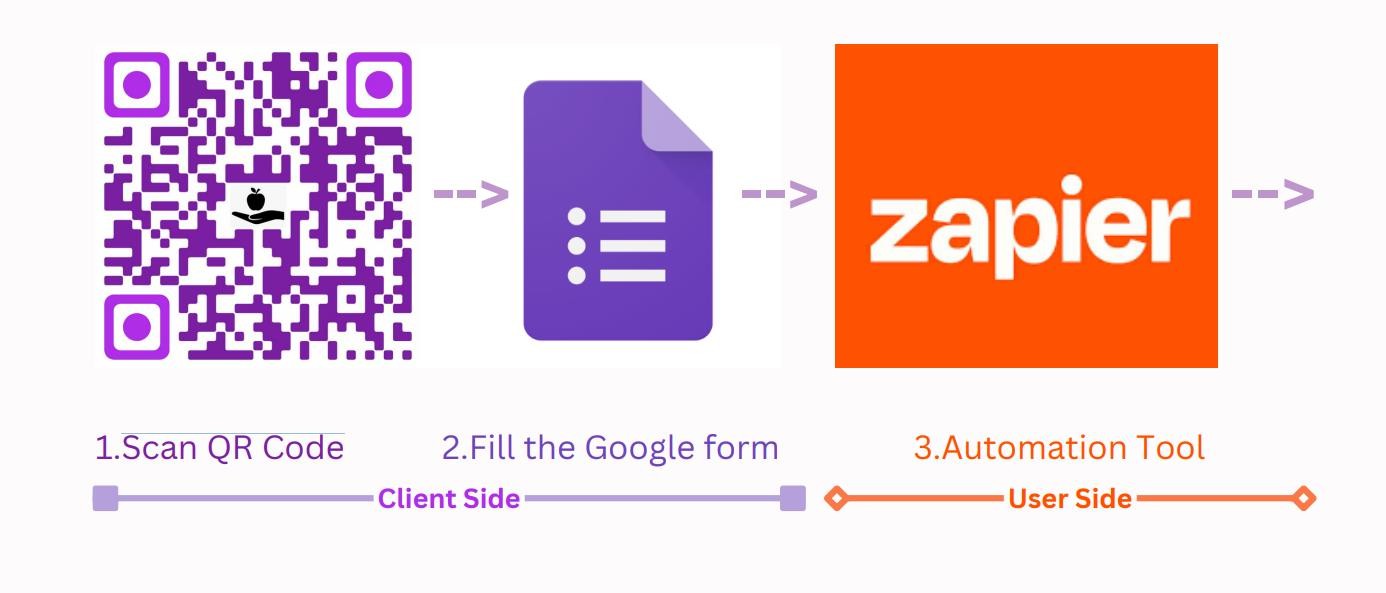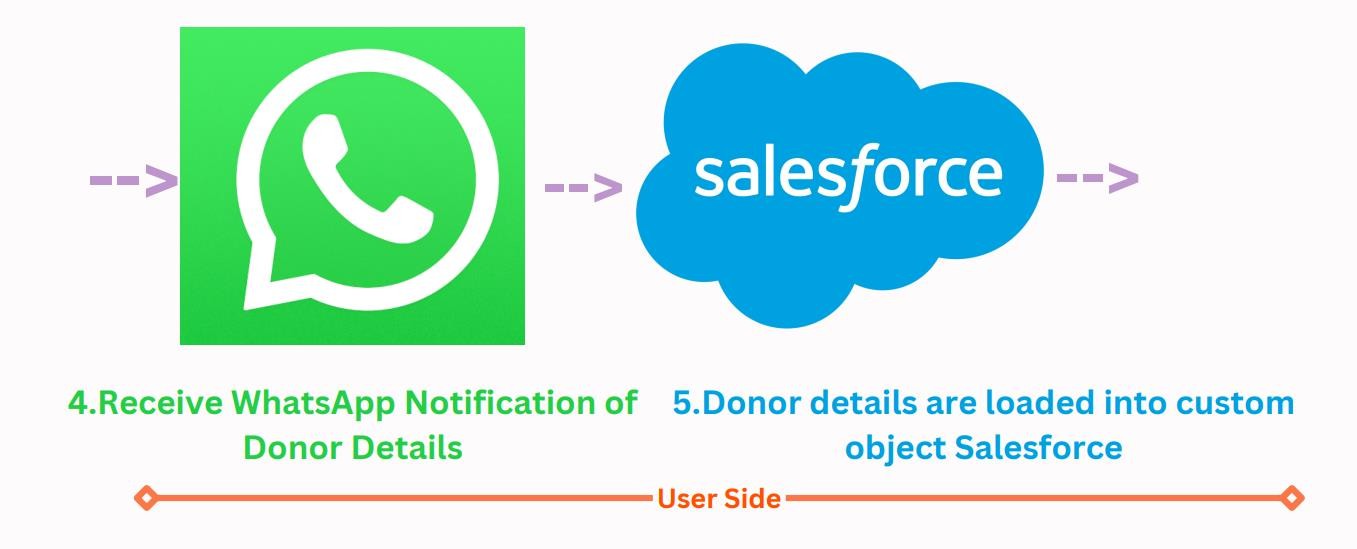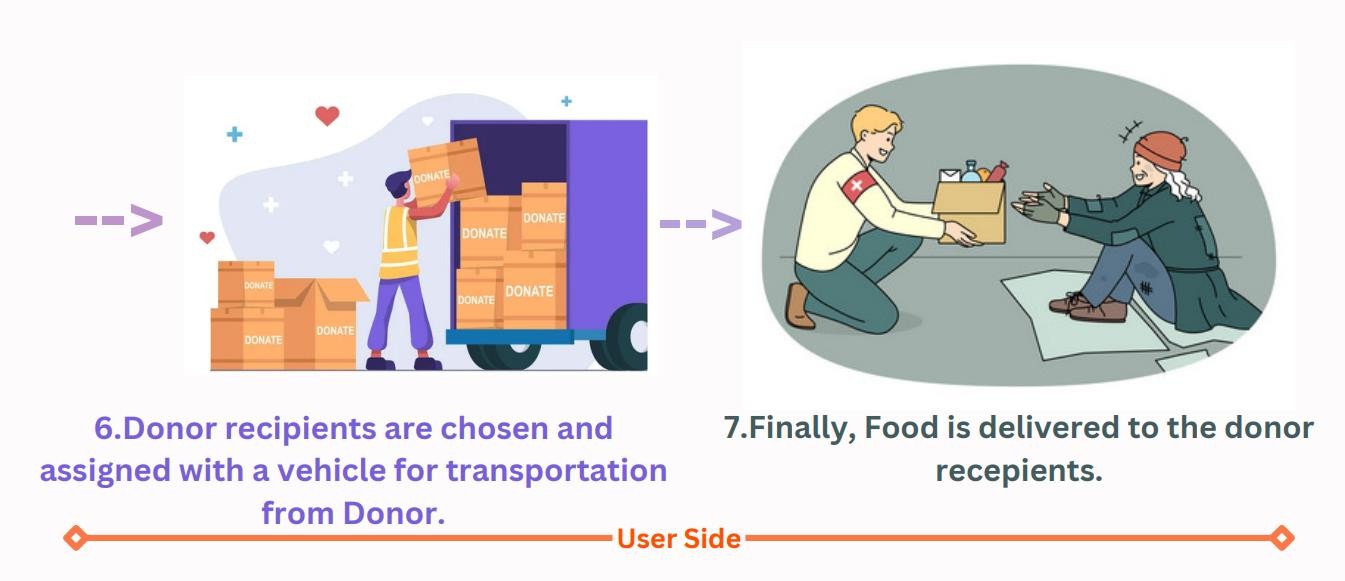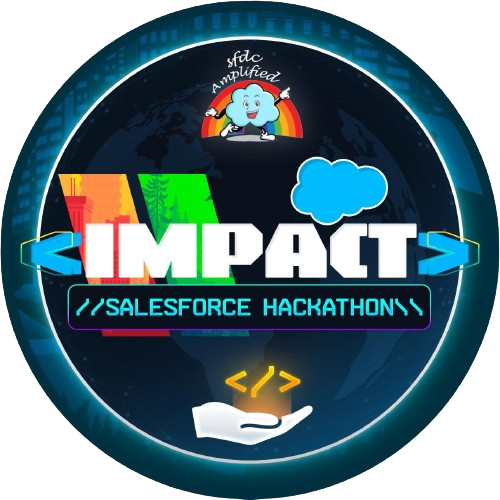Unlocking the Potential of Technology to Develop a Food Donation Application and Transforming Lives.
By Vishnu Sai R, Padmini S (Salesforce Developers)
Introduction:
Step into the realm of innovative solutions with Salesforce, bridging technology and societal nourishment!
What to Build:
In this guide, we’ll guide you through the process of constructing a Food Donation App from the ground up. If you’re unfamiliar with Salesforce, don’t worry – we’re breaking down each step in easy terms. By the end, you won’t just understand the basics but also feel motivated to explore the Salesforce universe for a meaningful cause.
Topics Covered:
- Custom Objects for Donor Data and Donor Recipients data.
- Google form creation
- Flows to Send Reminders
- QR Code Creation
- Setting up Social Integration using Zapier.
Flow Diagram:





The Food Donation application aims to address the pressing issue of food insecurity by
leveraging the capabilities of Salesforce and Zapier. In collaboration with local food banks, NGOs, and community organizations, this project establishes an efficient platform for the donation and distribution of surplus food to those in need. The initiative is driven by the belief that technology can play a pivotal role in reducing food wastage and ensuring that edible surplus food reaches individuals and families facing hunger.



Minimize Food Waste: The primary goal is to minimize food waste by providing a streamlined platform that connects food donors (restaurants, catering services, individuals etc.) with organizations that can redistribute surplus food to those who require it.
Enhance Efficiency: Streamline the process of food donation, from submission to distribution, through the implementation of Salesforce modules and automation. This involves creating a user- friendly interface for donors, receivers, and administrators.
Improve Communication: Facilitate effective communication between donors and recipient organizations, ensuring transparency in the donation process. This includes real-time updates on available food, acceptance notifications.
Target Audience and Beneficiaries:
Food Donors: Restaurants, catering services, event organizers, and individuals with surplus food looking to make a positive impact in their communities.
Receiving Organizations: Local food banks, shelters, community centres, and NGOs dedicated to addressing food insecurity.
Administrators and Coordinators: Individuals responsible for overseeing and managing the food donation platform, ensuring its smooth operation and resolving any issues that may arise.
End Beneficiaries: Individuals and families facing food insecurity who will benefitfrom the timely and equitable distribution of donated food.
By connecting these key stakeholders, the Food Donation project seeks to create asustainable and impactful solution to the dual challenges of food waste and hunger, fostering a sense of community and social responsibility.


Overview of the Overall System Architecture:
The architecture of the Food Donation project is designed to provide a scalable and efficient solution for managing food donations and distributions. The system is built on the Salesforce platform, integrating various modules and external components to facilitate seamless communication and data flow. The key components include Salesforce flows and Zapier.
Components Involved:
Donor Portal: A custom portal allowing food donors to submit details about surplus food, including type, quantity, and availability.
Receiver Portal: An interface for receiving organizations to review, accept, or reject food donations, with real-time communication features.
Transportation Portal: A centralized dashboard for administrators and coordinators to monitor and manage the overall food donation process. This includes tracking donations, generating reports, and managing user access.
External Systems:
Food Inventory Systems: Integration with external systems like Zapier that manage food inventory to ease automation.
Communication Systems: Integration with communication systems such as WhatsApp for real-time notifications and updates from donors. Facilitates real-time communication between stakeholders for instant updates on donation status.
Implementation:
Step 1: Created QR Code – Where a donor needs to scan whenever the food is available and he is willing to Donate, from this feature we are involving a user-friendly environment.
Step 2: Made a Google Form- Where he/she has to fill the form with Name, Address, email, frequency of donation, availability of food as well as contact details.
Step 3: Once he/ she fills the google form, an automation tool by name Zapier sends notification via WhatsApp to the Food Donation organization that an order has received with contact number.
Step 4: A representative/volunteer verifies the stored details in Donor custom object, which are captured from Google form and assigns it to Donor recipient via lookup relationship.
Step 5: Using the transportation custom object representative/volunteers assigns a vehicle to transport food from Donor to Donor Recipient, hence we are eliminating the logistical challenges.
Step 6: A notification is sent via email to the Donor that “Thanks for Donation” using workflow email alerts and flows.
Step 7: Food is delivered.
Effect and usefulness
There are organizations who are providing food as they are charitable. And they are collecting money which is not transparent for viewers. As humanity comes from birth and not by age or by economic standards, we have come with a solution of mainly concentrating on low community donors, mostly college going students or any other who can participate and even run campaigns.
As a matter of transparency and also everything needs a proof I have chosen Salesforce developer free edition and an automation tool by name Zapier, which costs around 30 USD per month. From this we are reducing production account costs of Salesforce Full Copy sandbox. But we can manage for a startup. Using the tools by name Google form, Salesforce and Zapier made this project stand- alone, where 95% of work is going to be done by Zapier.
Challenges and Solutions
Logistical Challenges: Coordinating the pickup and delivery of food can be a logistical challenge, especially when dealing with perishable items or large quantities of donations.
Hence, we are providing transportation and can be tracked by using transportation custom object. Mismatch of Supply and Demand: Ensuring that the donated food reaches the intended beneficiaries efficiently can be a challenge due to various factors like accessibility.
Hence, we are collecting the quantity of food from donor object and allocating to donor recipient according to the food availability.
Communication and Education: Lack of awareness about donation opportunities or inefficient communication channels can hinder the success of food donation programs.
Hence, we are run campaigns using campaigns sobject. And also, it is easier to scan QR Code and fill Google Forms.
Infrastructure and Resources: Optimizing Infrastructure and Resources with Free Salesforce Developer Edition and Zapier, an automation tool.
Conclusion
As Food donation stands as a powerful means to address hunger and food insecurity, yet it’s not without its complexities. Despite challenges in logistics, regulations, and distribution disparities, the impact of these initiatives is undeniable.
By navigating these hurdles through efficient logistics, stringent safety measures, legal compliance, equitable distribution, and community engagement, food donation programs can significantly alleviate hunger. Sustainable management strategies for surplus food, coupled with awareness campaigns to destigmatize receiving donations, are pivotal for success.
Ultimately, the collective effort—where donors, volunteers, organizations, and communities unite—propels the transformative potential of food donation. It’s a testament to compassion, unity, and a shared commitment to ensuring that no one goes hungry. As these initiatives evolve, the ongoing dedication to addressing challenges ensures that the impact continues to grow, making a meaningful difference in countless lives.
